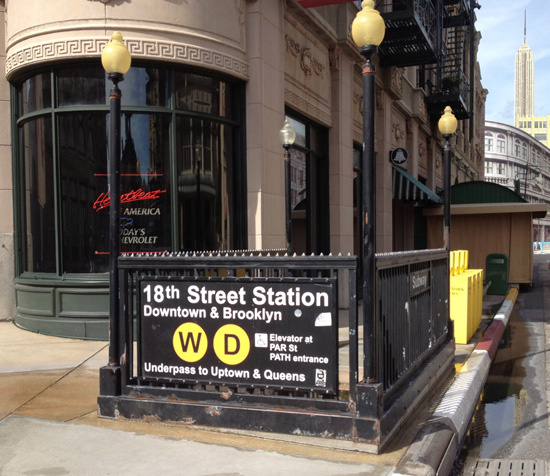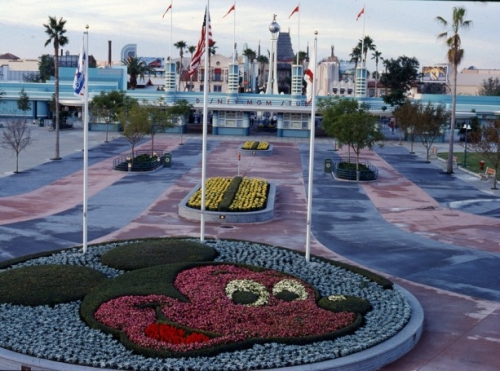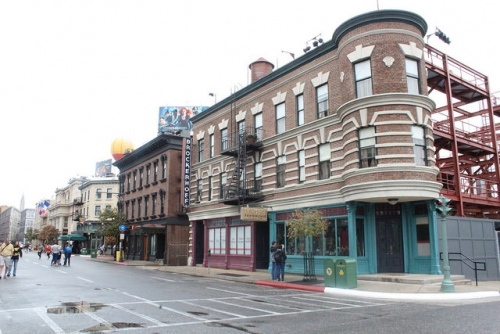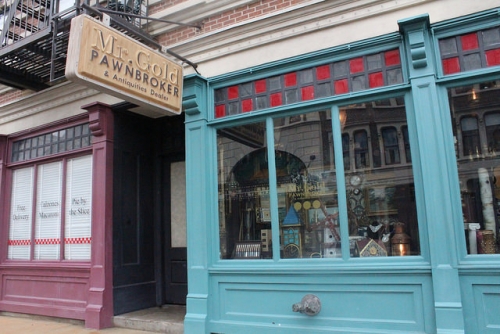
"The world you have entered was created by The Walt Disney Company and is dedicated to Hollywood--not a place on a map, but a state of mind that exists wherever people dream, and wonder, and imagine, a place where illusion and reality are fused by technological magic. We welcome you to a Hollywood that never was— and always will be."
- Michael Eisner, May 1, 1989
When Imagineers first dreamed up the idea of adding a behind the scenes look at how movies are created, an entirely new theme park was not originally part of the equation. With Michael Eisner as CEO, a group of about ten Imagineers began work on adding a Hollywood themed pavilion to Epcot Center. Eisner had become fascinated with the idea of bringing Hollywood to the Walt Disney World Resort after spending some perusing the company’s archives, where he came across Walt Disney’s plans for a backstage tour of the Burbank studios. Using these original plans, Eisner dreamed up a pavilion, to be located in between the Land and Imagination pavilions in Epcot, where a movie themed backstage tour would be the feature attraction.
By the mid-1980s, with Eisner’s “Disney Decade” just around the corner, plans were continually increased to include more attractions, therefore requiring the use of more land. As the ideas for a tram style movie tour attraction outgrew its home at Epcot, Eisner led the way in expanding the pavilion’s Imagineers to a group of about sixty, so that research could begin on a new park altogether. Construction for the park began in 1986 with the rising of the Earful Tower, a massive pair of Mickey ears that could be seen from much of the park, including one major Streets of America attraction, the Studio Backlot Tour.
Entrance to Disney-MGM Studios
Image: Disney
Disney-MGM Studios theme park was to be one of the most unique vacation entertainment experiences in the world. It would have all the Disney magic synonymous with the rest of Walt Disney World, while allowing guests to have new experiences which would immerse them into the movies, and also work as an active film and animation studio. The latter concept, which was made possible through a strategic partnership with Metro Goldwyn Meyer, was the primary aspect that set the park apart from all of the others. Not only could guests become part of the movies through detailed attractions like the Great Movie Ride, but they would also have a variety of opportunities to see how these movies are created from start to finish, with a close up, behind the scenes view of working sets and backlots.
New York Street and Beyond: Productions on the Backlot

Image: Disney
The park’s major backlot was the Streets of America, or as it was initially known, New York Street. New York Street is the main series of false fronts located in the back of the park fashioned after a large city. Not only did New York Street demonstrate the effectiveness of using false fronts for film shoots, but it also helped guests to better understand the idea of forced perspectives. For instance, the Empire State Building seen in the backdrop of New York Street is about four stories tall, whereas the actual Empire State Building is closer to 100. The building in the park however appears to be taller than it is because it is pushed further back from the rest of the set, and the buildings surrounding it seem smaller themselves.
The greatest feature of New York Street was simply its ability to change based upon production needs, while still being accessible in a way that guests visiting the park could see glimpses of production from the Backlot Tour’s tram. Certain aspects of the skyline, and details of the “city” were interchangeable in that they could easily become a part of skylines for other cities, like Chicago, or Boston for instance. As Michael Eisner once pointed out however, it was extremely important for the production crews to keep theme park management informed about what the décor on the street was supposed to look like with each set change.
For instance, while preparing to shoot “The Lottery,” crews designed the street to look authentic to the actual New York City. By “authentic,” they brought in trash and graffiti, and have the standard fronts appear with some “added character,” that an actual, lived in city would definitely have. Set crews dirtied up the streets one afternoon, and left everything in place overnight to begin filming the next day. However, when the crews arrived the next day, they found that New York Street was back to its regular appearance, as Disney’s third shift custodial cast simply saw the area as too dirty for a Disney park, and so they returned the street to its original “less authentic” setting.
False fronts on New York Street after it became open to guests
The first major televised production filmed on the Streets of America actually occurred for the park’s opening special, on May 1, 1989, when dozens of stars sang and danced up and down New York Street. The grand opening special, along with a handful of other educational programming televised at the time also included sneak peeks into how this part of the park operated both as a behind the scenes film set, and also in showcasing what guests would see while riding through the area on the Studio Backlot Tour. For generations of Americans who grew up with Disneyland, the Magic Kingdom, and Epcot, Disney-MGM Studios would be an entirely different experience, and so it needed to be marketed in such a way to convey this idea to audiences viewing the special from home.
As a working studio, a number of films had at least some production time on in the park including “Ernest Saves Christmas,” “Splash Too,” and “Quick Change” just to name a few. One of the most famous films produced on New York Street specifically was Dick Tracy (1990) starring such celebrities as Warren Beatty, Al Pacino, Madonna, Dick Van Dyke, and Dustin Hoffman. After the film's production, Dick Tracy became one of the many selling points of the Studio Backlot Tour, as guests could see clips from the movie and easily relay the images to the area they’d just visited.
A couple of films began production at Disney-MGM Studios before the area was even open and functioning as a theme park. A number of television shows were also in production at the park, although at the Streets of America specifically, the most remembered is likely the New Mickey Mouse Club in the early 1990s. Another hit television production filmed in the early days of the park was the mini-series, “Separate but Equal.” A variety of other hit films, such as Disney’s “Newsies,” for instance, were also filmed at least in part on New York Street.



Add new comment